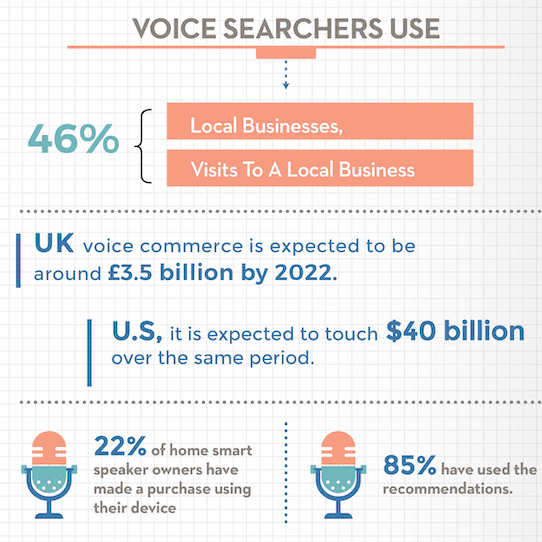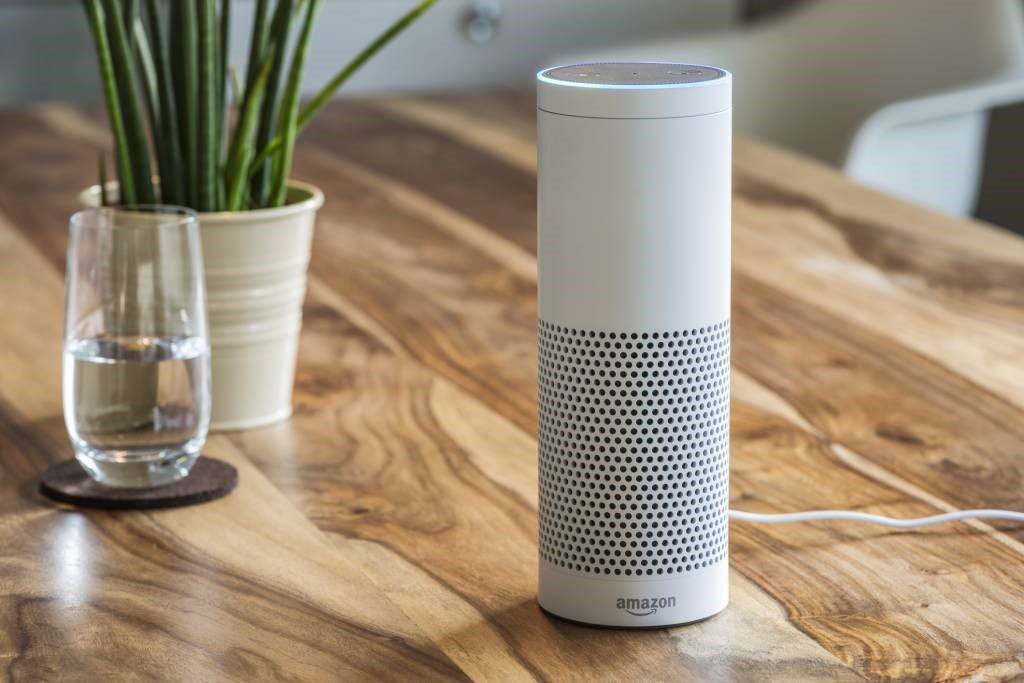Voice Search Trends

What Is Voice Search?
The digital world has taken a whole new turn since AI became a mainstream trailblazer in the tech industry. Artificial Intelligence (AI); especially robotics & Deep Learning fields have entirely revolutionized the way we do things with incredible precision, accuracy, and speed. This dynamism has improved the way we use the internet to get information. Today, thanks to improvements in voice technology, the way we search online is very different.
Perhaps, you’re probably wondering what Voice Search is and why you should care.
Voice search allows users to perform a search by verbally asking a question in a natural language on a smartphone, smart device or a computer rather than using the traditional search. Technically, pretty much enables your inbuilt laziness to manifest in its full glory (pun intended) by allowing you to speak into a device as opposed to typing keywords into a search query; after all, nobody loves hard labor.

The wave of voice search was first felt in 2011 when Google updated Chrome to have text-to-speech built into the functionality of Google Search. Since then, lots of improvements in speech recognition technology have thrust Voice Search to the forefront of search marketing.
The Growth Prospect of Voice Search
No doubt voice search has arrived, and it’s here to stay. With its popularity continuing to grow exponentially; especially among millennials, identifying trends in Voice Search will play a vital role in learning what the future holds in store for marketers, and how they can leverage unique voice search patterns and user behaviors to reach and serve new audiences.
Current statistics show that 41% of adults use voice search at least once per day. Projections show that by the year 2020, at least 50% of all online searches will be voice searches. As a business owner looking forward to gaining a share from the 50% of the global voice search market, you need to get to work now. Facts, trends, and statistics can help you formalize a good SEO and marketing strategy for voice-based search.
10 Stats Showing Why You Should Pay More Attention To Voice Search
50% Of All Searches Will Use Voice By 2020
ComScore predicts that 50% of all searches will be accomplished by voice search in 2020. It’s just six months to the year 2020 – presuming ComScore analysis is correct; this means your business will either begin its ascent into financial bliss or sink into Internet oblivion depending on its voice search optimization.

By 2020, 30% of Web Browsing Will Be Screenless
Browsing on devices without a screen is the future and the rise of A.I will power this development. As for why it matters – it underscores the role that keyword-optimized, topic-focused, well-written content will have in the years ahead. Whether your audience reads that content or a robot reads it to them, words are still words. Choosing the rights ones will be that much more important in screenless search scenarios.
1 Billion Voice Searches Take Place Every Month
As of January 2018, there were an estimated one billion voice searches per month
About 46% of smart speaker owners use their voice to find a local business

1 Out of Every 4 people aged 16-24 Uses Voice Search On Mobile
65% of 25-49-year-olds speak to their voice-enabled devices at least once per day. The 25-49 year old demographic is the most likely to perform daily voice searches, followed closely by 18-24-year-olds, and 50+-year-olds, respectively. Though 25-49-year-olds are the most active voice searchers, the 18-24 demographic are the ones helping to drive early adoption of the technology. 61% of 25-64-year-olds say they’ll use their voice devices more in the future.
The 18-24 demographic mirrors this trend, with 57% saying they’ll increase their voice device usage in the coming years. 71% of wearable device owners predict they’ll perform more voice searches in the future. Though wearable users are the most optimistic, tablet and speaker users are not far behind (Source: PwC).
Smart Speaker Usage Is projected To Rise At A CAGR Of Nearly 48%
According to 2018 analytics from Statista; the smart speaker is projected to grow at a compound annual growth rate of nearly 48% to include over 76 million users by 2020. Currently, over 34 million smart speaker devices were sold in the U.S., with 2019 sales projected at 36 million units. As people become more accustomed to interacting with voice activated/responsive devices, smart speaker sales will continue to rise, and the use of voice search will increase accordingly.

Google Home and Amazon Echo account for 94% of all smart speakers in use
Amazon and Google account for 94% of all smart speakers in use and Google. 82% of Amazon Echo smart speaker owners subscribe to Amazon Prime. While the Apple HomePod understands 99.4% of all queries, it only answers 52.3% correctly, putting it behind Amazon Echo (64%), Google Home (81%), and Harman Kardon Invoke (57%) in that regard.
Smark Speakers is a $601 million industry in 2019.
The Voice search device is a $601 million industry, and it’s forecasted that by 2024, the global smart speaker market could be worth $30 billion.
55% of households are expected to own smart speaker devices by 2022.
A study from Juniper Research has found that smart speakers such as Amazon Echo, Google Home, and the Sonos One will be installed in over 70 million US households by 2022, reaching 55% of all homes. Total installed devices will exceed 175 million. Juniper also forecasts that Voice Assistant devices across all platforms – smartphones, tablets, PCs, speakers, connected TVs, cars and wearables, will reach 870 million devices in the US by 2022, an increase of 95% over the 450 million estimated for 2017.
Voice is expected to be a $40 billion channel by 2022.
Voice shopping currently accounts for about $2 billion in consumer spending in 2019. To take advantage of this revenue-driving growth opportunity, today’s marketers must understand the voice of their consumers. More so, Up to 43% of voice-enabled device owners use their device to shop. Consumers across age groups are using their devices to assist with making a purchase.
To summarize; voice search is on the rise!
This is revolutionizing the way people look at a particular product/service/information, simply because it’s easy and effective. As a provider of such product or service, you should be on top of your game – ready to leverage this tech and the marketing tool.
If you spend the next couple of years not regarding voice search as a massive cultural change, you are likely investing in your own demise. However, if you optimize your site for voice search now, you’ll probably be ahead of the competition and see strong rankings that will effectively grow your brand long-term.

